- Happy Holidays
- Picture of the week
- Bocas del Toro, Panama
- Marina Chahue, Mexico is open
- Isla el Tigre, Amapala, Honduras
- Marina Papagayo, Cost Rica – Clarification and Update
- Drake Bay, Cost Rica
- Costa Alegre, Mexico
- Burgees’ in Panama @ Shelter Bay Marina
- Lithium Battery dangers got little attention
- Thermal runway
- Reply with Pictures and info
- Opt-Out
1) Merry Christmas, Hanukkah Sameach and happy Kwanzaa and Happy Holidays to all !
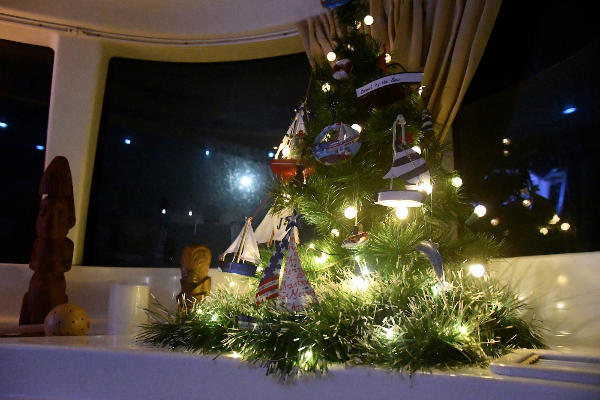
Please email us your vessel decoration holiday pictures or put them on LINE.me

2) Picture of the week – Cost Rica
Monkey climbs by as sun sets at El Avion Restaurant
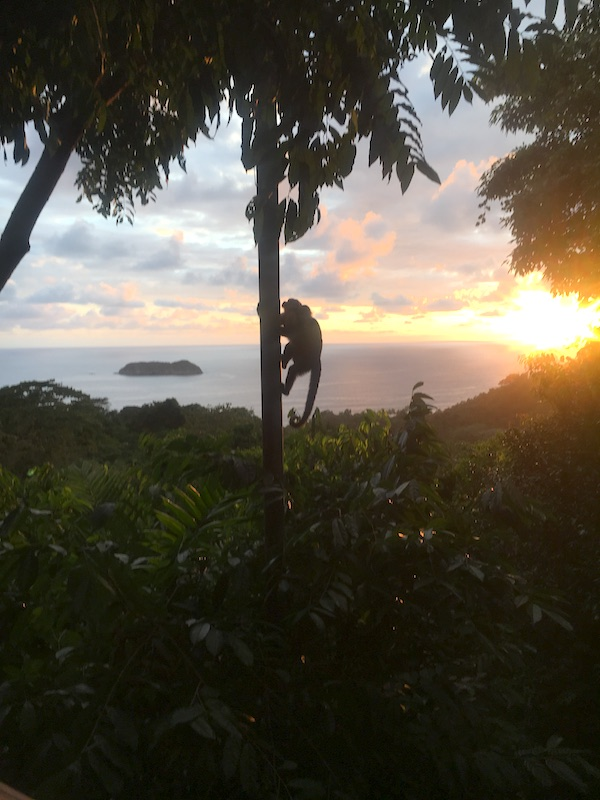
Dan & Angela


ANGELIQUE
3) Bocas del Toro, Panama
We are in Panama near Bocas del Toro
and took a taxi to The Bluff Beach.
Eat some wonderful food at The View Restaurant it was great


Crew
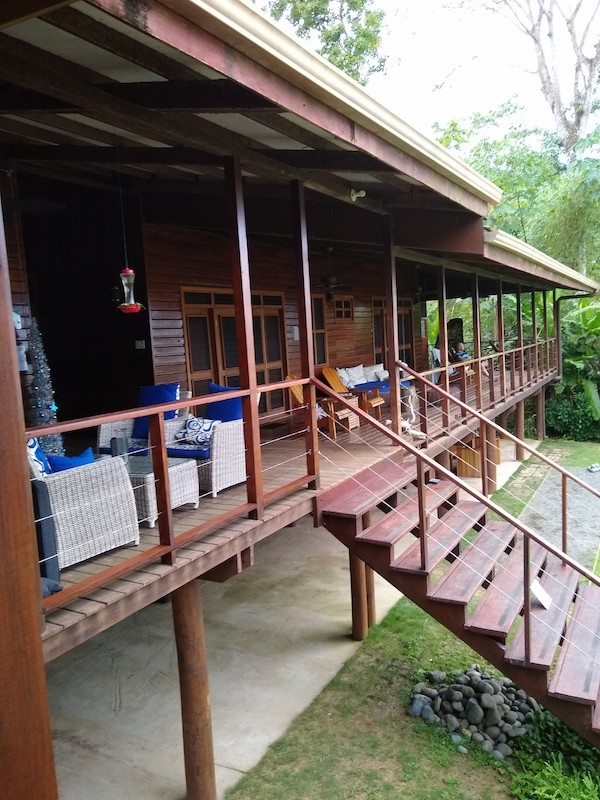

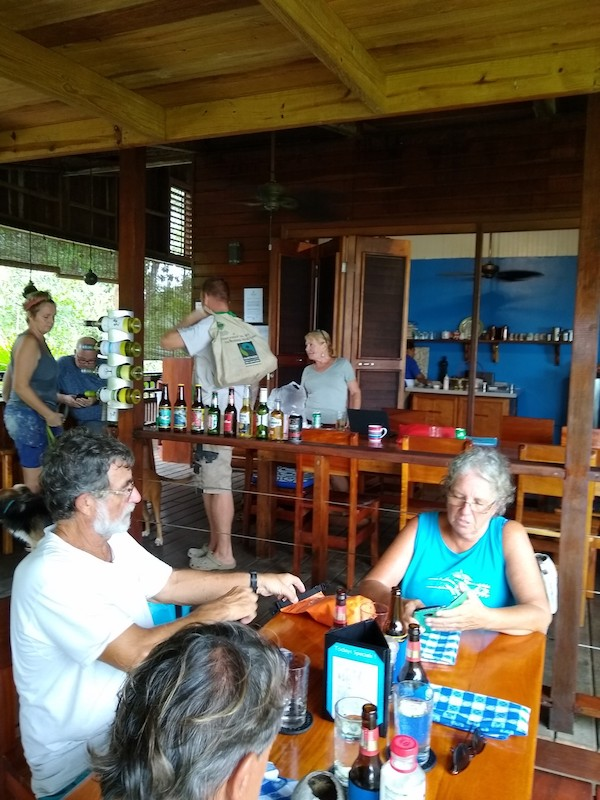
Mariah with Shearwater

Merry Xmas



Merry xmas
Eric & Pati
SHEARWATER
4) Marina Chahue is open – 2.3 meters observed !
Reservations VHF 16
or call
+52 958 587 2652
emails
egutierreza@fonatur.gob.mx
pjimenez@fonatur.gob.mx

Details and comments at
http://www.goodnautical.com/mexico-pacific/marina/marina-chahue
(claimed 3.5m at high tide via call by the Panama Posse today )
Marina Chahue is open. We got in this morning. I witnessed 2.2 meters depth at min,
so caution is advised. It is not new but for 11MXN /ft/day, I guess it is just fine.
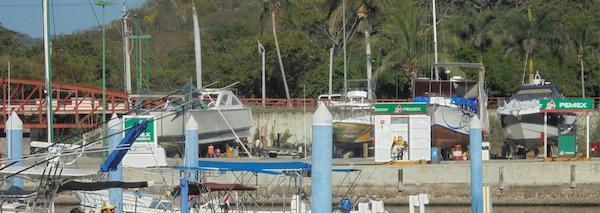
It is full of hidden rules – nobody has a way to know about – until you have prepaid your stay.
(Municipal Marina) Security is a bit of a pest with the inforcement of their rules
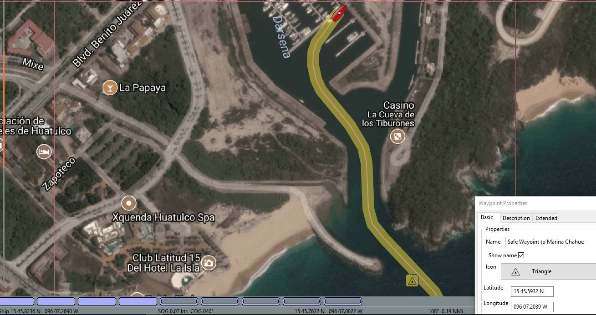
There is a ‘no night ladies’ restriction (really). Also, no hull cleaning in marina.
Frederic
MAKANI
5) Honduras, Isla el Tigre, Amapala

This is a photo of the Avant and Anduril crew on the dock at Amapala, El Tigre, with our guide Bob.
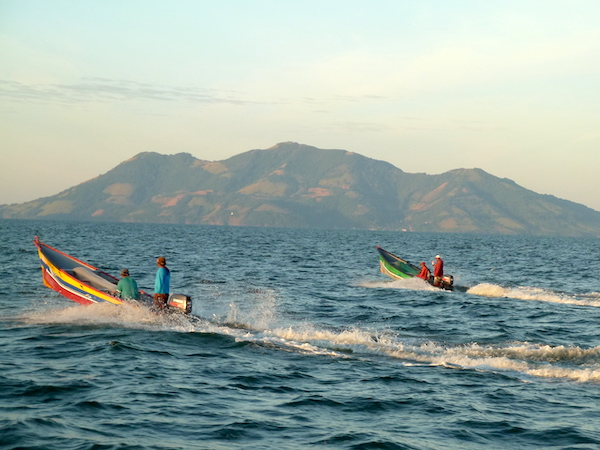
Fishing Pangas Leaving from El Tigre


Alice & Greg
ANDURIL with AVANT
6) COSTA RICA, Marina Papagayo Clarification and Update
1. Playa Del Coco is the port of entry. Clearing in there has no cost when owners clear in themselves. To clear in at the marina all boats must use a clearing agent. The arrangement for the clearing need to be made a minimum of 48 hours in advance of their arrival to Marina Papagayo in order for the agent to set up the logistics for clearing on site. The agent fees range from $450 to $550 depending on size and if the vessel arrives on the weekend.
It is important to note the decision to use or not use an agent cannot be done once they arrive to the marina. If the boat arrives to our docks and then decide they do not want to use an agent it is a real mess because technically we are not permitted to let the boat sail back to Coco because they have no paperwork. If they arrive without advance arrangement from the agent and decide they want to pay fee then the vessel is subject to quarantine until the agent can arrange the clearing. in some cases this may be a minimum of 24 hour and could go to 48 hours.
2. Bonding: At Marina Papagayo it is not possible to Bond a vessel. All of the official Marinas were given the benefit of offering duty exoneration or what is called a two year MOPT permit in order to populate the marinas. This exoneration process has a cost and we offer a dockage credit on the cost depending on how long the boat stays.
Bonding can only be done in Golfito at Banana Bay and Fish Hook marinas. These marina were grandfathered in when the new Marina Law was passed some years back. Therefore these locations were given the option to Bond vessels which essentially freezes the Temporary Import Permit. But again, Bonding can only be done at these two facilities in Golfito.
Best Regards,
Dan
Gerente, Marina Papagayo
t +506 2690-3602 dan.eaffaldano@marinapapagayo.com
http://www.goodnautical.com/costa-rica/marina/marina-papagayo
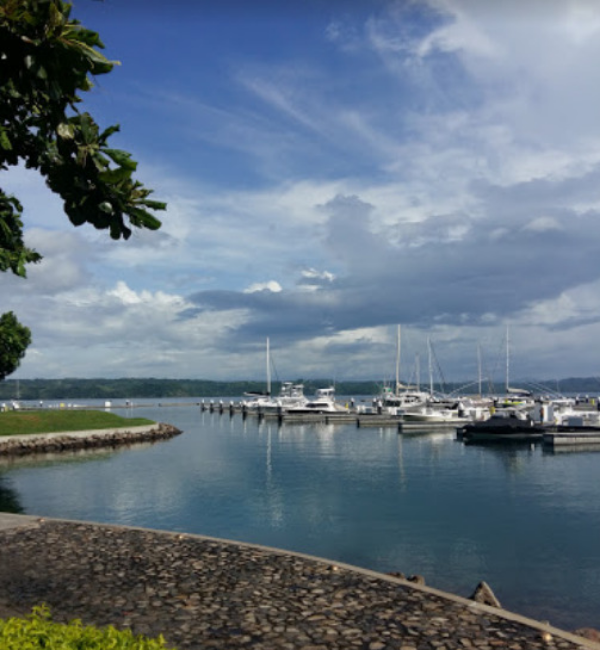
note from Singularity :
We’ve been in Marina Papagayo for about 10 days. We rented a car for two days and visited Liberia and stayed in a lodge at the Cañón de la Vieja park. Very nice. The marina concierge is offering free trips to some locations, but not a regular thing. Saturday they took four cruisers and some of the crew of a big yacht to Tamarindo which was very cool. So if you come to Papagayo, ask if they have anything planned. Marina Papagayo Costa Rica recently has been offering free spontaneous shuttle trips. They hire a van and driver to take anyone in the marina to a destination. The first trip was on 12/14 to the surf meca of Tamarindo. It’s about a 90min drive from the marina and we spent the day walking through shops and lounging in seaside restaurants. Witch’s Rock was especially cool with a live band and great craft beer from their brewery.
The second on 12/18 was to the Rincón de la Vieja National Park. Several hiking paths were available from easy/medium to tougher. We took the former and our driver, Marco, doubled as a guide through the park. He earned a nice tip from us.
After the excursion on both trips we were offered an opportunity to stop in a supermarket for provisioning. Bonus!
We don’t how often or if this will be a continuing service, but we sure hope so!
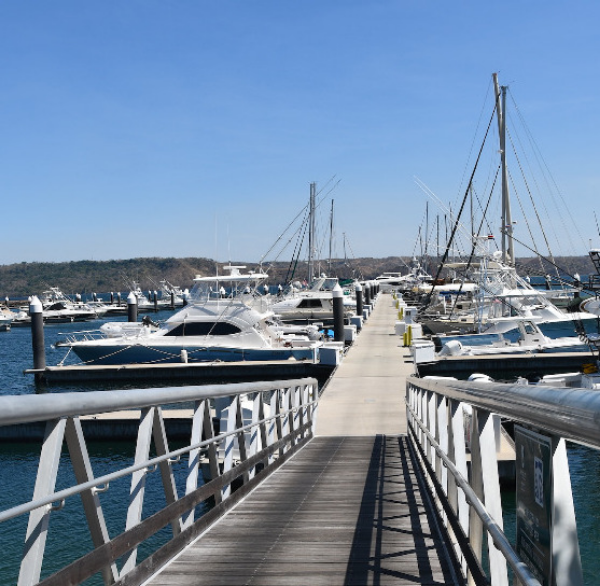
7 ) Drake Bay, Cost Rica
Blue Oasis loves Bahia Drake, on the OSA Pennisula, CR.
The little town up the hill has 2 small markets plus fruiteria.
Plenty of little restaurants. We took a delightful hike to the beaches today. Get out your stern anchor.
http://www.goodnautical.com/costa-rica/anchorage/drake-bay
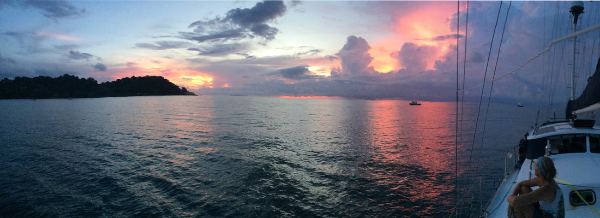
note: here is a link to a great summary form SV Liquid about Drake Bay
http://www.svliquid.com/bahiadrake.html
Barry & Kathy
BLUE OASIS
8) COSTA ALEGRE, Mexico
JO downwind sailing back to Barra De Navidad from Tenacatita
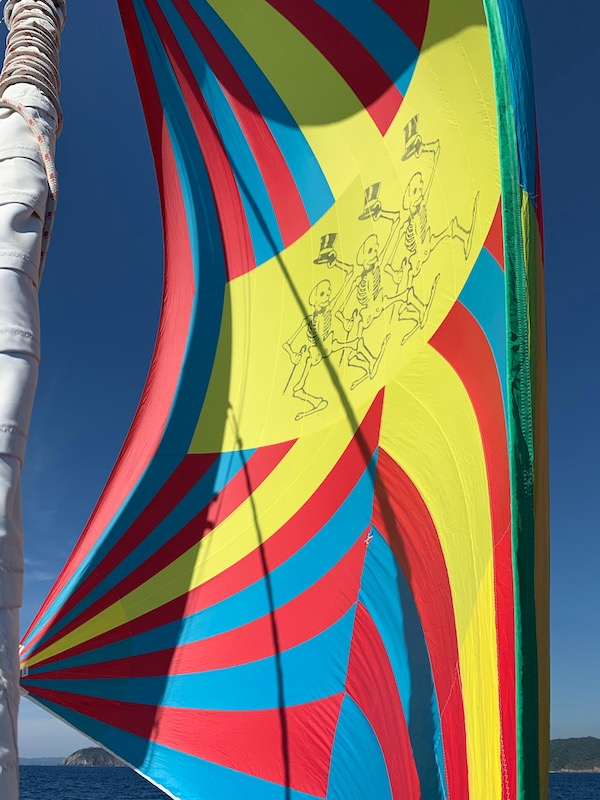
Phillip Jay & Kelley
JO
9) Burgees’ in Panama @ Shelter Bay Marina

TALIESIN ROSE & SONOMARA got their burgees !
10) Lithium Battery dangers got little attention from Coast Guard despite red flags before Conception fire
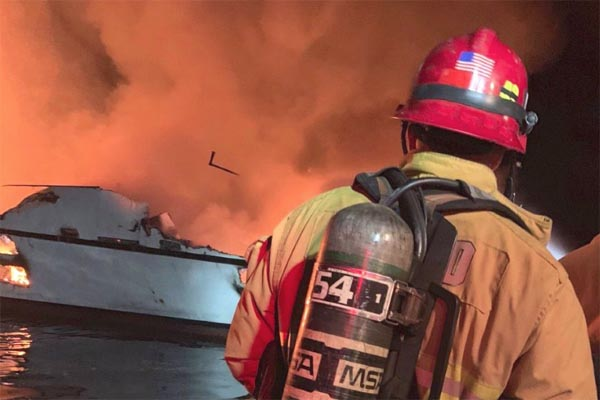
SANTA BARBARA — (LA Times article)
Nearly a year before 34 people were killed in a fire aboard the dive boat Conception, a second vessel owned by the same charter company began a three-day voyage around the Channel Islands.
Divers on the Vision charged numerous lithium-ion batteries installed in cameras, phones, computers and even underwater scooters with an array of power outlets in the salon area. At some point, one of those batteries began to smolder as it was charging. An alarmed crew member quickly tossed it into the water, preventing the fire from spreading, a witness and several sources told The Times.
The fire underscored the potential dangers of such batteries, which have been banned from cargo areas of commercial planes and become the subject of tighter regulations by the U.S. Navy.
But the U.S. Coast Guard didn’t sound major alarms about the fire risk of the batteries until after the Labor Day fire aboard the Conception, the worst maritime disaster in modern California history.
Officials are still working to determine the cause of the fire, investigating whether it was arson, an electrical or battery fire or some sort of malfunction on the vessel. But some boat safety experts have pointed to the batteries — which have become a staple for divers who use them to power underwater equipment such as lights, cameras and scooters — as a possible starting point for the blaze.
Coast Guard inspectors in California didn’t know about the previous fire aboard the Vision until The Times requested details about it this month.
“In hindsight, it would have been nice to know about it,” Coast Guard Lt. Cmdr. Matthew Kroll told The Times.

After the Conception fire, the Coast Guard for the first time recommended that owners of passenger vessels immediately urge crews “to reduce potential fire hazards and consider limiting the unsupervised charging of lithium-ion batteries and extensive use of power strips and extension cords.”
Glen Fritzler, whose Truth Aquatics firm owns both the Conception and the Vision, believes the batteries were the cause of the Conception disaster.
“I’m telling you the batteries are the issue, and we were never warned,” Fritzler said in an emailed statement to The Times. “I have had top level professional photographers dive with me and they did not understand the dangers.”

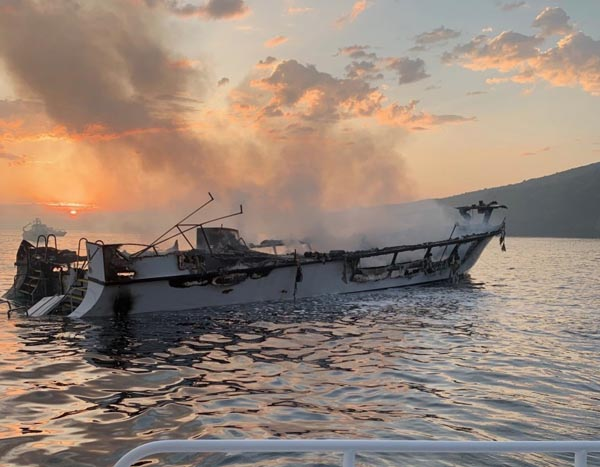
The smoldering wreckage of the Conception at dawn in September (Ventura County Fire Department)
Fritzler and his attorney declined to comment further about the fires aboard the Vision or the Conception, citing the ongoing investigations by the National Transportation Safety Board, the U.S Coast Guard and the FBI. He also declined to comment on why his company didn’t report the earlier fire to authorities. Operators are not required to report fires that cause less than $75,000 in damage.
A preliminary investigation of the Conception fire found major breakdowns in required safety procedures on the vessel owned by Truth Aquatics, including inadequate crew training and the absence of a roving night watch at all times while passenger bunks are occupied to alert passengers below deck of an emergency.
Truth Aquatics has also come under scrutiny for how it handled battery charging on boats. Divers who used the Conception previously told The Times that the operator used numerous extension cords to handle the high demand for power to charge various devices.
Passengers often angled for limited charging outlets nestled behind foam-filled, L-shaped benches in the salon areas to power strobe lights, cameras, flashlights and video power packs.
“Stuff is plugged in everywhere,” said Ben Wolfe, a retired Los Angeles County fire captain.
Alarm in aviation
Much of the concern about the dangers of lithium-ion batteries has come from the commercial airline industry.
The Federal Aviation Administration and the U.S. Department of Transportation have expressed concerns because the batteries pack large amounts of energy and can overheat or self-ignite if they are defective, damaged or overcharged, experts said.
The batteries are used in consumer products such as cellphones, laptop computers, power tools, cameras and countless rechargeable electronic devices. Manufacturers each year make millions of devices powered by the batteries.

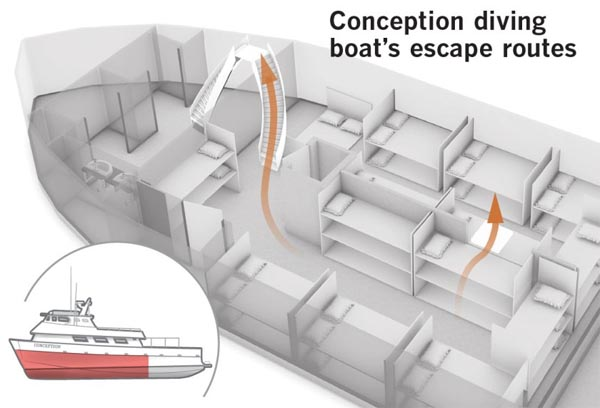
Passengers sleeping below deck when the fire on the Conception broke out were trapped. The design of its escape routes has come under scrutiny.
Lithium-ion batteries create heat when they charge. If not properly vented, the heat from one cell or battery can set off a chain reaction with other batteries, said Thomas Barrera, a scientist and consultant who advised NASA on the topic.
To protect against short-circuiting, batteries contain a thin strip of polypropylene to prevent electrodes from touching. If they short-circuit, heat can be generated rapidly, and once oxygen becomes involved, things can turn bad quickly, Barrera said.
Such fires also burn hot — up to or more than 1,000 degrees Fahrenheit — and could exceed the capabilities of an aircraft’s fire-suppression system and lead to a catastrophic failure of an airplane, the FAA said. Internationally, regulators have attributed four deaths and the total loss of three aircraft to incidents involving fires started by lithium-ion batteries being transported in cargo, in 2006, 2010 and 2011.
After advising global airlines in 2017 to keep the batteries out of cargo holds, the FAA and the U.S. Department of Transportation this year adopted rules allowing passengers to take them only in carry-on luggage. In cargo holds, passengers and airline employees cannot see if a battery fire starts and spreads to other baggage. In the cabin, crew members and passengers can at least see and smell smoke.
The number of lithium-ion battery incidents nationwide remains unknown. But several groups now track the problem. As of Oct. 1, the FAA had logged at least 252 cases since 2006 in which batteries smoked or caught fire inside the cargo hold or passenger area of an aircraft.
Among other things, the fires involved laptops, chargers, e-cigarettes and cellular phones. In at least one case, headphones have exploded on a plane. Aircraft personnel in the U.S. have had to extinguish a device with a smoking lithium-ion battery inside a cabin at least once a month this year.
Airline employees have taken action to prevent catastrophes. In September, a passenger’s bag with a portable speaker on an American Airlines luggage cart caught fire in Dallas. The fire was extinguished, but it burned several other bags, FAA records show.

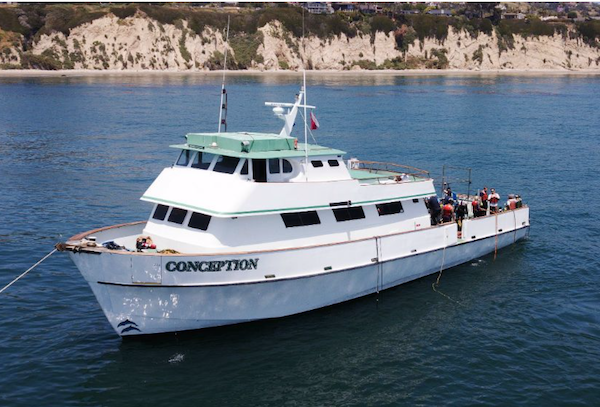
A drone photo shows the 75-foot Conception on May 3.
In August, a passenger’s portable battery charger began to heat up and would not turn off on a SkyWest flight between San Francisco and Texas. A flight attendant placed the device in a battery containment bag and monitored it, FAA records show.
In June, a fully loaded Southwest Airlines plane was evacuated and taken out of service after a passenger’s carry-on bag, with an e-cigarette battery charger and two batteries inside, started to smoke under a seat. A flight attendant used a fire extinguisher to douse the device, according to FAA records.
The U.S. Navy also has severe restrictions on lithium-ion batteries, and in 2017 it banned all vaping devices from its vessels after they sparked numerous fires.
In 2008, lithium-ion batteries being charged ignited a blaze aboard a Navy SEAL mini-submarine in Pearl Harbor. Since then, the Navy has carefully controlled and vetted lithium-ion batteries as larger ones have become part of more equipment on vessels.
The Navy recently established the Navy Battery Development and Safety Enterprise to advance the fleet’s lithium-ion-enabled capabilities. The Navy’s research wing is regarded as among the most advanced when it comes to developing safer batteries to avoid fires.
Two trade groups representing battery makers, developers and suppliers urge caution when transporting the batteries on airplanes, according to their websites. “The industry obviously has an outstanding record for safety. There are millions of electronic devices that people use every day and the record reflects that,” the Rechargeable Battery Assn. said in 2017.
But restrictions on devices that use lithium-ion batteries have not extended to passenger boats.
Until the Conception fire, the Coast Guard had not issued any widespread guidelines regarding their use, although in 2016, a Marine Safety Alert warned boaters about a recall of Samsung phones and provided ways to minimize risks from those batteries overheating.

On Sept. 11, nine days after the Conception fire, the Coast Guard issued a safety bulletin for passenger vessels instructing boat operators to — among other things — “reduce potential hazards from lithium batteries, power strips and extension cords.”
Asked why it issued the alert, the Coast Guard told The Times it wanted to “provide an immediate reminder to owners and operators about regulations related to firefighting, lifesaving, preparations for emergencies, and means of escape.”
A Times review of nearly 20 years of Coast Guard records found the agency repeatedly rejected some recommendations by the National Transportation Safety Board for tougher safety rules.
Last week, three California members of Congress introduced federal legislation to require small passenger vessels to have at least two escape exits, strengthen standards for fire alarm systems and create mandatory safety rules for the handling and storage of phones, cameras and other electronic devices with lithium-ion batteries.
More batteries on diving excursions
Boats such as the Conception and Vision were built decades before the boom in personal electronics and high-end diving gear. On dive excursions, passengers now carry cameras, computers, lights, underwater scooters and cellphones — almost all of which are powered by rechargeable lithium-ion batteries.
Albert Vogel, a 73-year-old from Durham, Calif., was on an overnight trip on the Conception the week before the deadly Labor Day fire. He said the electrical outlets were “dangerously close to the seat cushions.”
“If one of these devices had overheated … it could have easily set fire to the cushions,” he said. “We were not told anything about being careful with charging or any issues related to that. We were just on our own on that, and people used them.”
Don Barthelmess, who taught diving at Santa Barbara City College, said many divers brought power strips to plug in their devices.
“Anywhere there would be a 110-volt outlet, divers would commandeer an outlet,” he said. “People pretty much fight.”

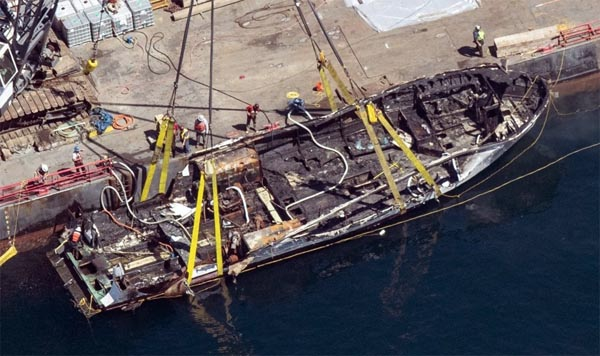
The burned hull of the Conception is brought to the ocean surface by a salvage team for investigation in September.
But Barthelmess, who called Truth Aquatics “the Cadillac of diving operations in California,” didn’t think the charging setup — or any other aspect of the boat — raised safety alarms.
“Being on a boat is inherently dangerous, and these are the risks that we accept as people that go diving and go on boats,” he said. “Fires are no exception. No amount of regulations or laws can prevent accidents.”
Greg Lousignont, 70, a former police officer from Peoria, Ill., said that he has been taking trips for three decades on Truth Aquatics vessels and that Fritzler, the owner, is a friend.
When he first started, few divers carted loads of electronic equipment. But that changed in recent years as manufacturers flooded the market with cheaper, mass-produced equipment, he said.
Barrera said these products bring risks, saying that cheaper knockoff cables and plugs don’t have a power management system to stop the overcharging of a battery.
Wolfe, the retired fire captain, was aboard the Vision when the battery caught fire last year. He didn’t see the fire, but other passengers told him about it. Wolfe recalled seeing areas around electrical outlets filled with other items.
He said the batteries and chargers were often stored on seat cushions crowded with other items.
“The space down behind the cushion often had T-shirts, towels and bottles of wine because it was a place to store them and stop them from rolling around,” he said.
That scenario could be problematic, Barrera said.
“If a lithium battery is buried while charging under clothes and on a surface that does not help dissipate that heat, a perfect storm of events can come into play,” he said.
Barrera and other experts emphasized that nothing is inherently unsafe about the batteries as long as precautions are taken. He said that astronauts on spacewalks depend on the batteries and that NASA is able to operate them safely even in the extreme environment of space.
Greater awareness of fire dangers
While divers continue to plunge into the waters off Southern California, boat owners are taking extra steps to limit fire dangers aboard vessels.
Andrea Mills, an education coordinator at Island Packers in Ventura County, said the boating company imposed new safety rules after the Coast Guard issued the warning about lithium-ion batteries in September. Island Packers never encountered any battery fires, but it banned all electronics, not just those with lithium-ion batteries, from gear stored below deck on its four vessels, Mills said. It went a step further than the Coast Guard warning to create an additional safety measure for passengers, she said.
“We are way more aware of the problems in cargo holds,” Mills said. “We did research and read about all the fires in airplanes.”
Ralph Clevenger, who shot photos and videos for Truth Aquatics, said there needs to be heightened awareness about charging devices on boats. He said he is part of an email group with dozens of photographers who have discussed how to educate boat owners about battery dangers.
We “have said, you have got to change things, it’s too dangerous,” he said.
from LA Times Dec. 15, 2019 5 AM

11) Thermal runaway of the lithium–ion battery initiates an unstoppable chain reaction.
The battery becomes gaseous, and a fire erupts that can hardly be extinguished by conventional means. Liithium ion batteries perform optimally, and will last longer, if they are kept at temperatures between
-10°C and +30°C. This range is consistent with findings by the U.S. Department of Energy’s Office of Energy Efficiency and Renewable Energy (EERE).
In very cold temperatures, batteries don’t achieve their full rated power until the battery cells warm up.
As the accompanying EERE graphic shows, batteries exposed to hotter average temperatures lose their ability to store energy; the hotter the temperature the faster they lose their storing ability. So in the tropics or in hot climates those whose will likely be looking to replace their batteries faster than owners living where the thermometer doesn’t often reach 110°F.


The C (−) temperature rate and cell voltage of LG HG2 and Panasonic NCR GA (at 100% SOC) versus C (−) temperature (top).
Temperature rate of C (+) and vessel pressure rate of LG HG2 and Panasonic NCR GA (at 100% SOC) versus C (+) temperature (bottom).
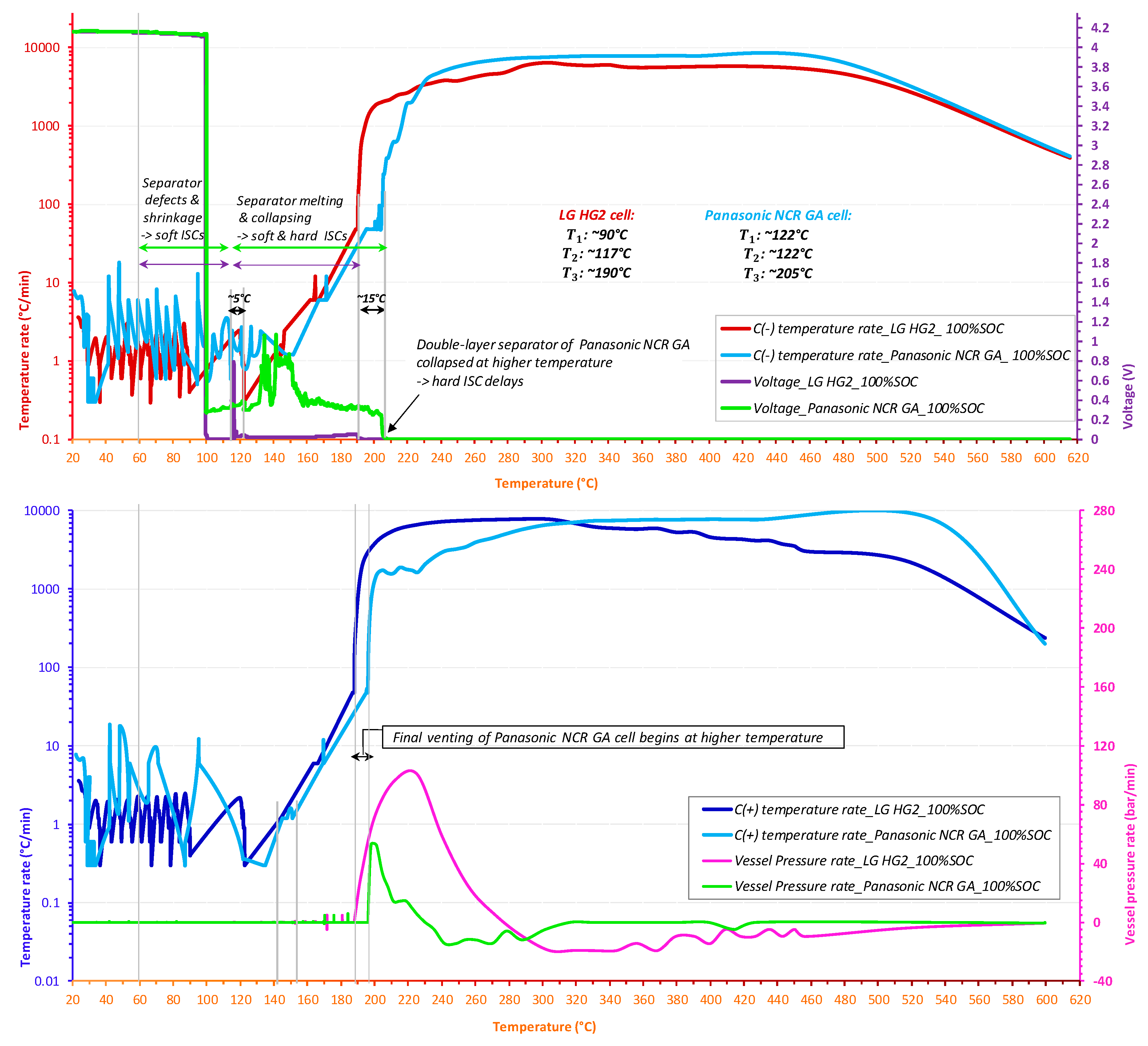
12) Please reply to this email with
– your updates
– contenders for picture of the week – links to your favorite SONGS
– relevant blog posts – and of course your valuable suggestions
and we’ll include it in the next FLEET UPDATE – Keep em ‘coming


The Panama Posse philosophy is to pass on nautical knowledge via the gestalt theory…
Dietmar & Suzanne
SV Carinthia
13) Opt-out from Fleet Updates simply reply with “REMOVE“

1 Comment
Add comment Cancel reply
You must be logged in to post a comment.

[…] 2019-12-22 >> […]